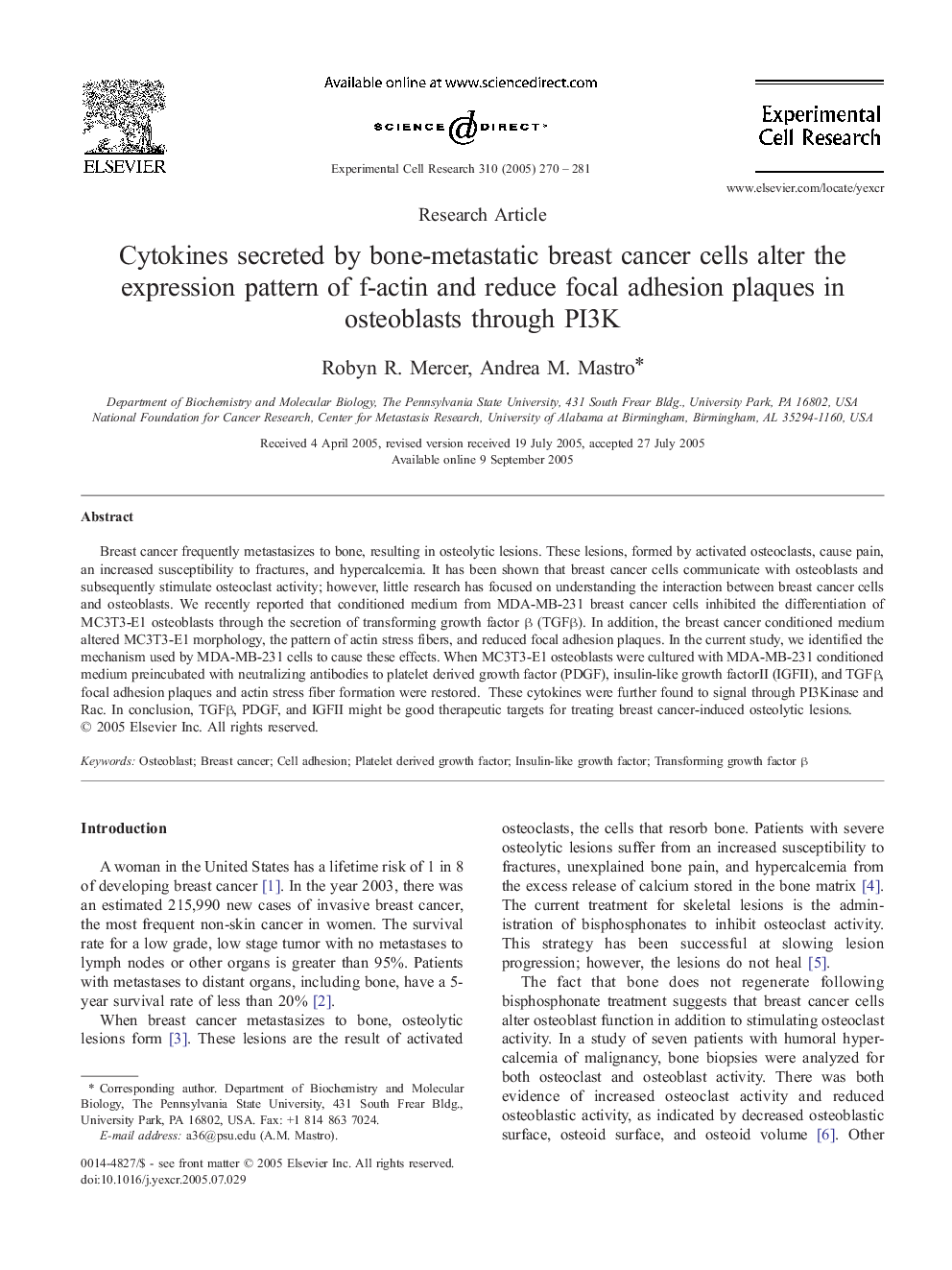| Article ID | Journal | Published Year | Pages | File Type |
|---|---|---|---|---|
| 9908660 | Experimental Cell Research | 2005 | 12 Pages |
Abstract
Breast cancer frequently metastasizes to bone, resulting in osteolytic lesions. These lesions, formed by activated osteoclasts, cause pain, an increased susceptibility to fractures, and hypercalcemia. It has been shown that breast cancer cells communicate with osteoblasts and subsequently stimulate osteoclast activity; however, little research has focused on understanding the interaction between breast cancer cells and osteoblasts. We recently reported that conditioned medium from MDA-MB-231 breast cancer cells inhibited the differentiation of MC3T3-E1 osteoblasts through the secretion of transforming growth factor β (TGFβ). In addition, the breast cancer conditioned medium altered MC3T3-E1 morphology, the pattern of actin stress fibers, and reduced focal adhesion plaques. In the current study, we identified the mechanism used by MDA-MB-231 cells to cause these effects. When MC3T3-E1 osteoblasts were cultured with MDA-MB-231 conditioned medium preincubated with neutralizing antibodies to platelet derived growth factor (PDGF), insulin-like growth factorII (IGFII), and TGFβ, focal adhesion plaques and actin stress fiber formation were restored. These cytokines were further found to signal through PI3Kinase and Rac. In conclusion, TGFβ, PDGF, and IGFII might be good therapeutic targets for treating breast cancer-induced osteolytic lesions.
Keywords
Related Topics
Life Sciences
Biochemistry, Genetics and Molecular Biology
Cancer Research
Authors
Robyn R. Mercer, Andrea M. Mastro,
